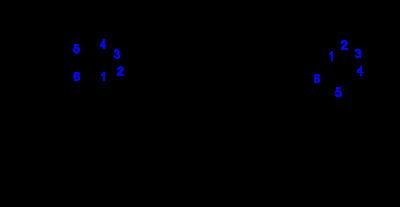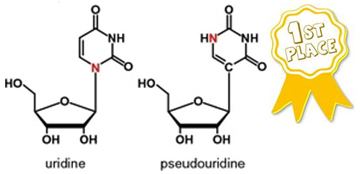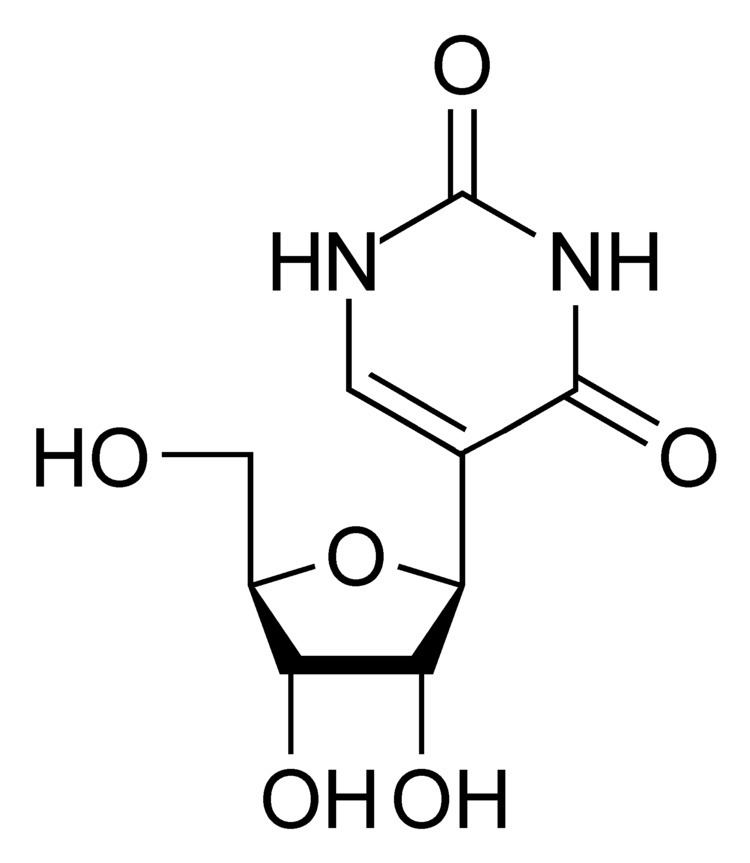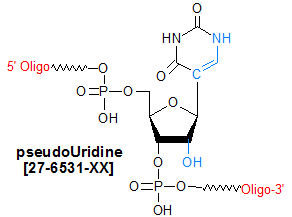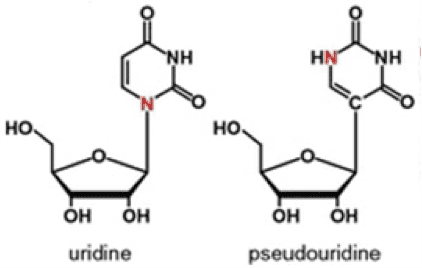Formula C9H12N2O6 Appearance White granular powder | Molar mass 244.2014 g/mol | |
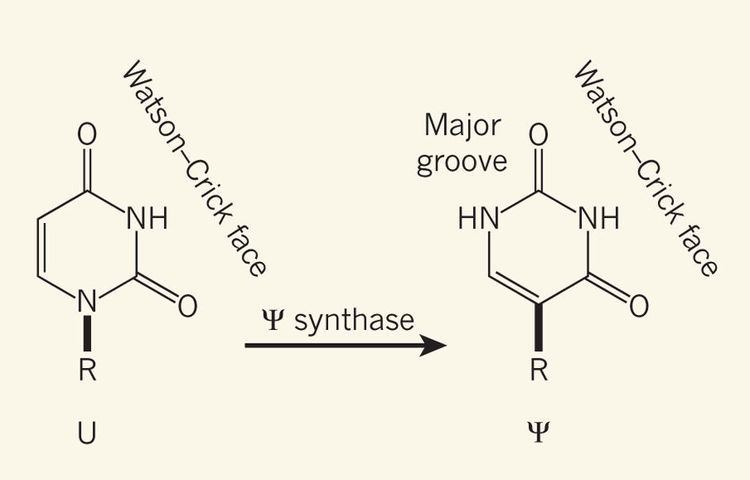 | ||
Pseudouridine meaning
Pseudouridine (abbreviated by the Greek letter psi- Ψ) is an isomer of the nucleoside uridine in which the uracil is attached via a carbon-carbon instead of a nitrogen-carbon glycosidic bond. It is the most prevalent of the over one hundred different modified nucleosides found in RNA. Ψ is found in all species and in many classes of RNA. Ψ is formed by enzymes called Ψ synthases, which post-transcriptionally isomerize specific uridine residues in RNA in a process termed pseudouridylation. Currently, about ∼ 9500 pseudouridine (Ψ) modifications have been identified in mammals and yeast and deposited in RMBase database.
Contents
- Pseudouridine meaning
- Loss of drosophila pseudouridine synthase triggers apoptosis induced proliferation and promotes
- References
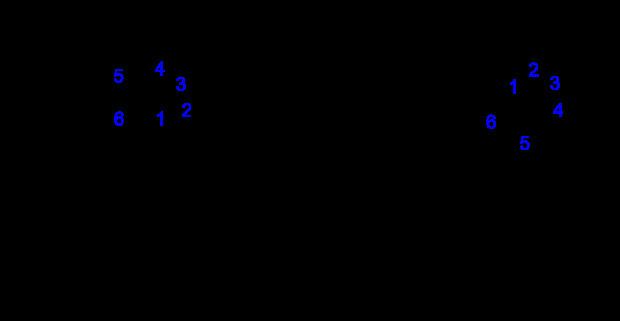
It is commonly found in tRNA, associated with thymidine and cytosine in the TΨC arm and is one of the invariant regions of tRNA. The function of it is not very clear, but it is expected to play a role in association with aminoacyl transferases during their interaction with tRNA, and hence in the initiation of translation. Recent studies suggest it may offer protection from radiation.

Loss of drosophila pseudouridine synthase triggers apoptosis induced proliferation and promotes
